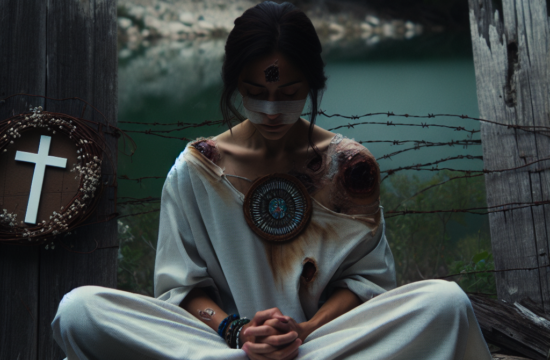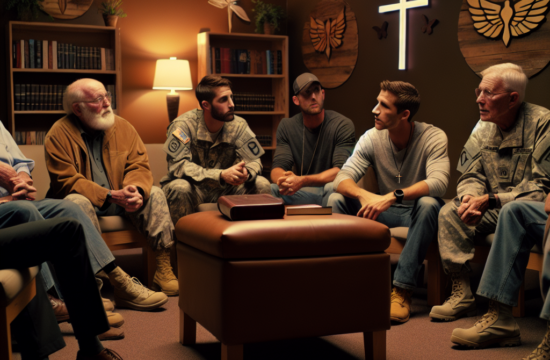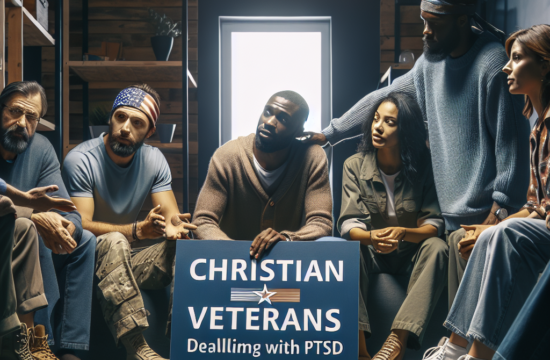==> Thank you for reading this post! Click Here If you are looking for support and Victory over PTSD.
The Real Story Behind PTSD Treatment for Veterans
- Understanding PTSD in Veterans
- Traditional Treatment Methods
- Innovative Approaches to PTSD Treatment
- The Role of Support Systems
Understanding PTSD in Veterans
What is PTSD?
PTSD, or Post-Traumatic Stress Disorder, is something many veterans experience after returning from combat. It can stem from a variety of traumatic events—everything from being in a firefight to witnessing loss. I’ve seen firsthand how these experiences can shake even the strongest individuals to their core.
The symptoms can vary significantly from person to person. Some might struggle with flashbacks or nightmares, while others may find themselves feeling constantly on edge. It’s like living in a war zone, even when physically safe. We’ve got to recognize how real this is for so many.
Understanding PTSD is the foundation for tackling it. It’s crucial to encourage open conversations about mental health. Normalize it—both accepting that it’s a reality and learning how to cope with it. Understanding is half the battle won.
Triggers and Effects
Triggers can come out of nowhere. A loud noise, a certain smell, or even just a crowded space can set off a chain reaction of memories and emotions. I’ve heard veterans describe it like being back on the battlefield, and suddenly, you’re not safe anymore.
The effects of these triggers can be debilitating. Many veterans find themselves isolating, pushing loved ones away, and drowning in their own emotions. The cycle can feel relentless. It’s essential to pinpoint these triggers to help veterans regain control over their lives.
Effective treatment needs to focus on understanding these individual triggers. It can be empowering when someone recognizes what sets them off. It’s about taking small steps to confront and manage those feelings of fear and anxiety, reintroducing joy into their daily lives.
The Importance of Acknowledgment
One thing I’ve learned is how necessary acknowledgment is. It sounds simple, but accepting that PTSD is not a personal failing is key. It’s an injury—just like a physical wound but hidden beneath the surface.
Creating an environment where veterans can feel safe to share their experiences makes a huge difference. I frequently encourage people to support one another, listen without judgement, and remind them they’re not alone in this fight.
Acknowledgment not only fosters healing but also strengthens the bond between veterans and those around them. Acknowledging their struggle is a significant step toward recovery, allowing them to open the door to healing.
Traditional Treatment Methods
Cognitive Behavioral Therapy (CBT)
When it comes to traditional treatments, Cognitive Behavioral Therapy, or CBT, is one of the big players in the game. It’s all about changing negative thought patterns and behaviors associated with trauma. Think of it as reprogramming your mind. I’ve seen clients really turn things around with this therapy.
The structure of CBT provides a safe environment for veterans to explore their feelings. It can feel pretty intense at times, but believe me, working through those dark moments can pave the way to healing. It’s about teaching individuals how to cope more effectively with symptoms.
While it might take some time, the results usually speak for themselves. Many veterans have found that with dedication and the right guidance, they can reduce their PTSD symptoms significantly. It’s all about finding the right therapist who understands the veteran mindset.
Medication Options
Another traditional avenue veterans might explore is medication. Antidepressants and anti-anxiety meds can help manage symptoms and allow more effective therapy to take place. It’s a personal choice that needs careful consideration and regular evaluation from a knowledgeable healthcare provider.
What I’ve seen is a lot of hesitation around medication due to stigma. Many veterans think they should be able to handle it without pills. However, there’s no shame in needing a little chemical assistance to get through the day. Sometimes we need to quiet the storm in our heads to focus on healing.
Regular check-ins with healthcare professionals ensure that the treatment remains beneficial rather than becoming a crutch. This personalized approach often leads to the best outcomes. It’s all about finding balance.
Community Support Groups
Support groups can provide a lifeline for many veterans facing PTSD. To share experiences with those who truly understand what you’re going through can be cathartic. It’s a unique sense of camaraderie that forms from mutual experiences.
Many veterans find solace in hearing stories similar to their own. Knowing they’re not alone can be the comfort needed to take significant steps towards healing. Just sitting together and sharing a laugh or a tear can remind folks that they matter.
Moreover, these groups often create networks of friends and accountability partners, fostering long-lasting relationships. I’ve watched many veterans flourish in these environments, transforming from isolated individuals into passionate advocates for mental health awareness.
Innovative Approaches to PTSD Treatment
Art and Music Therapy
Art and music therapy have become fascinating alternative routes to traditional therapies. Many veterans have expressed that creative outlets allow them to express feelings they struggle to articulate. Painting, drawing, or even drumming can unleash emotions in a non-threatening way.
In particular, I admire how music therapy can evoke memories and feelings in a healing way, providing an emotional release. Participating in these therapies can foster resilience and inspire creativity that reflects their healing journey.
Get Started with Recovery! Visit us for more Information and Support
Time and again, I’ve seen how engaging with art and music opens doors for many. It’s like finding a language that bypasses the walls built up over time, and it’s been incredibly enriching to witness those transformations.
Animal-Assisted Therapy
As a lifelong animal lover, I can’t get enough of Animal-Assisted Therapy! Having a furry friend by your side can make all the difference. These therapies utilize the natural bond between animals and humans to soothe emotional distress and foster positive interactions.
Therapy dogs, for instance, can provide comfort and support, acting as a bridge for veterans to engage more openly in therapy. The mere presence of an animal has shown to release stress-reducing hormones, easing anxiety in a seemingly magical way.
I’ve seen the smiles on veterans’ faces when a dog bounds into a room. It sparks joy and connection, breaking down emotional barriers that often feel insurmountable. It’s this simple pleasure of companionship that can be monumental in someone’s healing journey.
Virtual Reality Exposure Therapy
Let’s dive into the tech side of treatment: Virtual Reality Exposure Therapy (VRET). This ground-breaking method simulates environments and situations that trigger PTSD. It allows veterans to confront their fears in a controlled and safe environment. What a game-changer!
The beauty of VRET is that it can be customized for each individual’s triggers. You can walk through the battlefield but in a setting where you’re safe. It’s an innovative way to desensitize those overwhelming memories while still feeling secure.
While it may seem high-tech, many veterans have found immense relief through this method. The combination of breakthrough technology and psychological techniques creates a unique and effective treatment process that I genuinely believe holds promise for the future.
The Role of Support Systems
Family and Friends
The role of family and friends in a veteran’s recovery journey cannot be overstated. They are often the first line of support, providing love and understanding. Yet, it’s essential for these loved ones to educate themselves about PTSD, so they can actively help and not inadvertently create distance.
Being there to listen, without judgment, is crucial. When veterans feel comfortable opening up to family members or friends, it truly can make a world of difference. It promotes a sense of belonging and connectivity, reminding them they’re not alone in the struggle.
Encouraging patience and understanding can ease some tension. Healing isn’t linear, and ups and downs are part of the journey. It takes teamwork and compassion to create a supportive atmosphere where veterans can thrive.
Peer Support Programs
Peer support programs are another invaluable resource. These initiatives connect veterans with fellow veterans, creating bonds based on shared experiences. It’s empowering to talk with someone who gets it at a deep level—someone who’s walked the same path.
These programs often include mentorship, group activities, or informal gatherings, helping to establish friendships that matter. I’ve seen how veterans rally together to support one another, creating a sort of brotherhood and sisterhood in healing.
Having a peer support group can boost accountability as well. Members encourage each other to attend therapy, engage in self-care practices, and pursue healthy lifestyles, transforming recovery into a group mission.
The Community’s Role
Finally, don’t forget the broader community’s impact; it plays a massive role in the recovery process. Community outreach programs aiming to support veterans can help break down barriers and provide resources for mental health support.
Creating awareness about PTSD in public forums and social networks can shift the conversation toward a more supportive stance. This helps normalize the journey of healing and encourages engagement with available help.
Getting the community involved fosters understanding and creates environments that value and support veterans. Together, we can contribute to a culture that prioritizes mental health and encourages healing for our heroes.
FAQ
What is PTSD, and why do veterans suffer from it?
PTSD is a mental health condition that occurs after experiencing or witnessing a traumatic event. Veterans may suffer from PTSD due to the intense and often horrifying experiences they face in combat, which can lead to long-lasting emotional and psychological effects.
What are some traditional treatment methods for PTSD?
Some traditional treatments for PTSD include Cognitive Behavioral Therapy (CBT), medication, and community support groups. Each of these methods offers unique approaches to help veterans cope with their symptoms.
What innovative treatments are available for PTSD?
Innovative treatments for PTSD include art and music therapy, animal-assisted therapy, and Virtual Reality Exposure Therapy. These alternatives provide creative and engaging ways to confront trauma and manage symptoms.
How can family and friends support a veteran with PTSD?
Family and friends can support a veteran with PTSD by educating themselves about the condition, providing a listening ear, and fostering a safe environment for open communication. Encouraging participation in peer support groups and community resources can also be incredibly beneficial.












